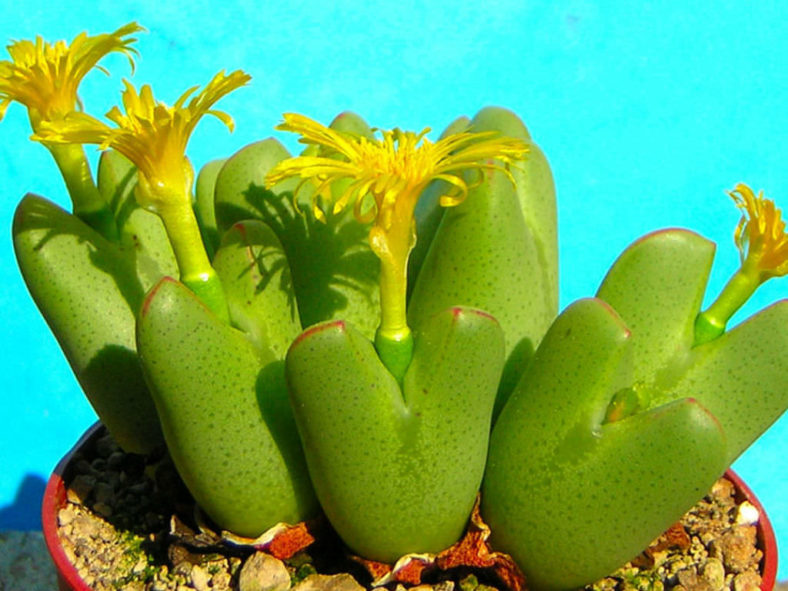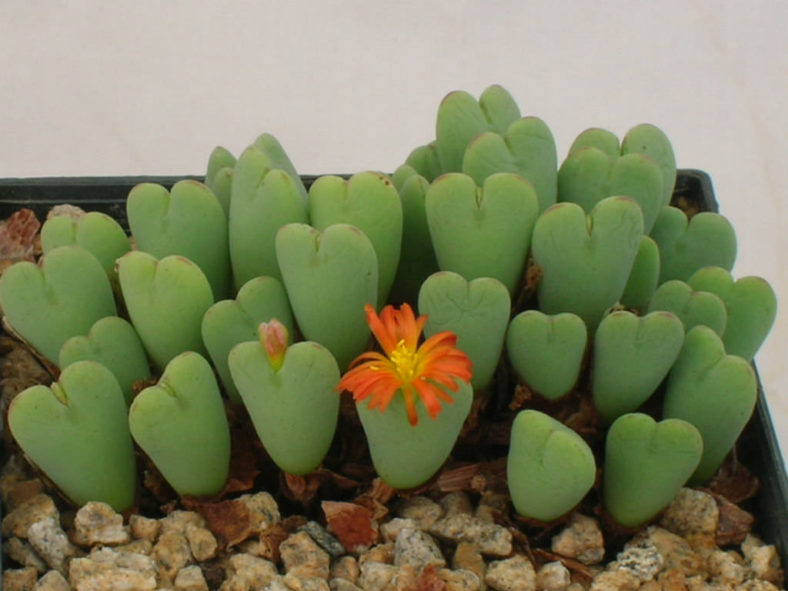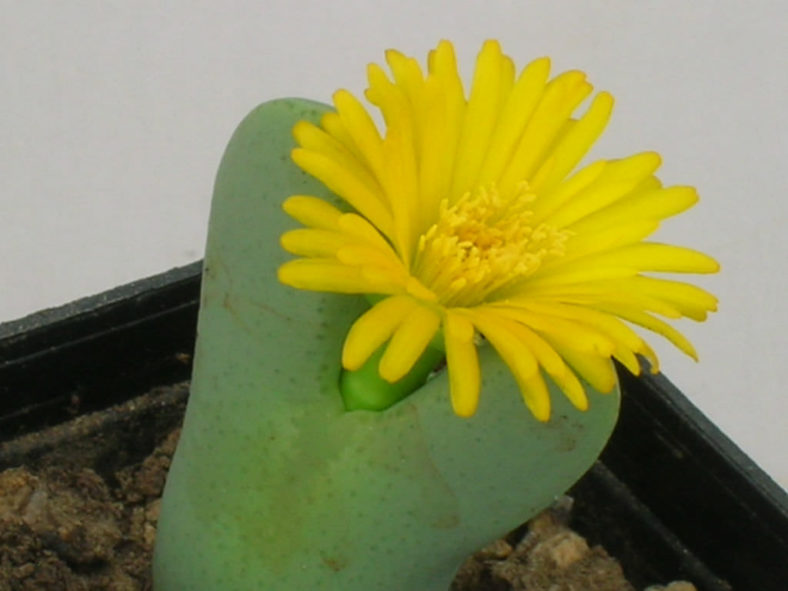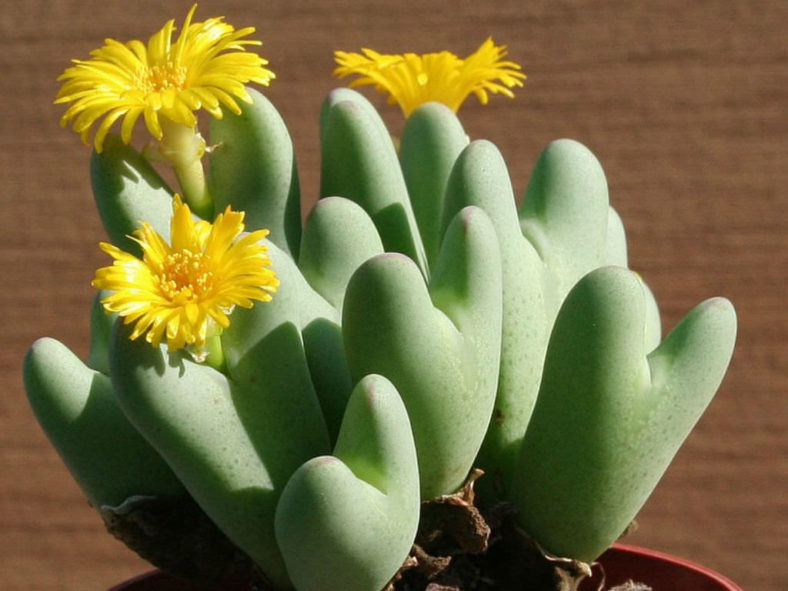Scientific Name
Conophytum bilobum (Marloth) N. E. Br.
Common Name(s)
Living Pebble, Two-lobed Cone Plant
Synonym(s)
Mesembryanthemum bilobum, Conophytum elishae, Conophytum meyerae, Mesembryanthemum elishae
Scientific Classification
Family: Aizoaceae
Subfamily: Ruschioideae
Tribe: Ruschieae
Genus: Conophytum
Etymology
The specific epithet "bilobum (bi-LOW-bum)" means "bilobate" and refers to the two-lobed bodies.
Origin
The native range of Conophytum bilobum is from the lower valleys of the Orange River and Bushmanland to near Bitterfontein in South Africa.
Description
Conophytum bilobum is a small succulent with bodies of two opposite, only partly fused leaves, cordate to rabbit-eared in side view, with keeled or rounded apices. The bodies can grow up to 3 inches (7 cm) tall and 1.2 inches (3 cm) wide. The leaves are smooth or shortly papillate, yellowish-green to glaucous or pinkish to reddish, often with darker green dots, red keels, and a fissure zone flanked by windowed patches.
The flowers are diurnal, yellow, rarely orange, pinkish, or white, measure up to 1 inch (2.5 cm) in diameter, and usually appear in fall.

Hardiness
USDA hardiness zones 10b to 11b: from 35 °F (+1.7 °C) to 50 °F (+10 °C).
How to Grow and Care
Most Conophytums need bright light but do not like too much intense sunlight. Therefore, to avoid sunburn, place them to receive a few hours of full sun in cooler periods of the day.
These plants thrive best in a porous growing medium that will drain quickly. Use commercial succulent soil specially designed for growing succulents, or make your own mix.
When Conophytums go dormant in the spring, they require little or no water. When plants begin growing in the fall, it is safe to water deeply, allowing the soil to dry before watering again.
Conophytums are light feeders and do not need fertilizer if repotted every two years. It is best to feed at the beginning of the growth period and just before flowering.
These succulents will benefit from repotting. Depending on the pot's size and growth rate, they typically need to be repotted every 2 to 4 years. The best time to repot a Conophytum is at the beginning of the growing season.
Conophytums are easily propagated by division. They can also be grown from seeds.
Learn more at How to Grow and Care for Conophytum.
Subspecies and Forms
Links
- Back to genus Conophytum
- Succupedia: Browse succulents by Scientific Name, Common Name, Genus, Family, USDA Hardiness Zone, Origin, or cacti by Genus
Photo Gallery
Click on a photo to see a larger version.



